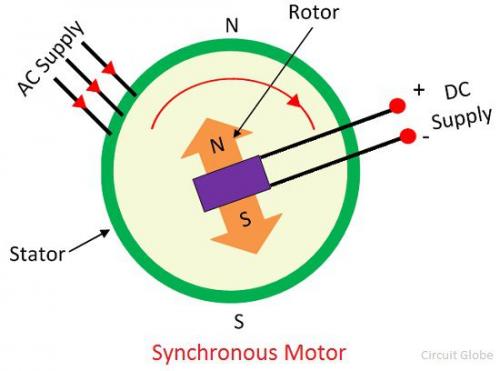Difference between Synchronous Generator and Asynchronous Generator

Synchronous generator,
that is, an alternator with the same rotor speed as the rotating magnetic field
of the stator. According to the structure, it can be divided into two types: a
rotating armature and a rotating magnetic field.
Synchronous generators are
one of the most commonly used alternators. In the modern power industry, it is
widely used in hydropower, thermal power, nuclear power generation and diesel
power generation.A synchronous motor that operates as a generator is one of the
most commonly used alternators. In the modern power industry, it is widely used
in hydropower, thermal power, nuclear power generation and diesel engine.
Electricity. Since the
synchronous generator generally adopts DC excitation, when the single machine
operates independently, the voltage of the generator can be conveniently
adjusted by adjusting the excitation current. If it is integrated into the grid
operation, the voltage is determined by the grid and cannot be changed. At this
time, the result of adjusting the excitation current is to adjust the power
factor and reactive power of the motor.
An asynchronous
generator is an alternator that utilizes an air gap rotating magnetic field
between a stator and a rotor to interact with an induced current in a rotor
winding. According to the working principle, it is also called "induction
generator". The speed is slightly higher than the synchronous speed. The
output power increases or decreases with the slip rate. It can be excited by
the power grid or self-excited with a power capacitor.
Economical
efficiency
(1) The power station
equipped with asynchronous generators has low investment cost due to the lack
of DC excitation system and synchronous devices.
(2) Since there is no
collector ring, brush, and rotor excitation winding, maintenance and operation
costs are low.
(3) The asynchronous
generator rotor is a rotor winding similar to the hidden pole and the
non-synchronous generator. Therefore, the general efficiency is higher than
that of the synchronous generator with the same capacity and the same speed.
Under the same water source, the asynchronous generator can generate more
power.
(4) The above economic
advantages of asynchronous generators will be partially offset by the required
excitation (or additional synchronous capacity or additional capacitors) of the
asynchronous generator.
(5) The magnitude of the
excitation required for the asynchronous generator is inversely proportional to
the rated speed of the motor (ie, proportional to the number of pole pairs of the
motor). The higher the speed, the lower the excitation of the target value.
(6) The area of the
asynchronous generator power plant is smaller than that of the synchronous
generator power plant
Post Your Ad Here
Comments